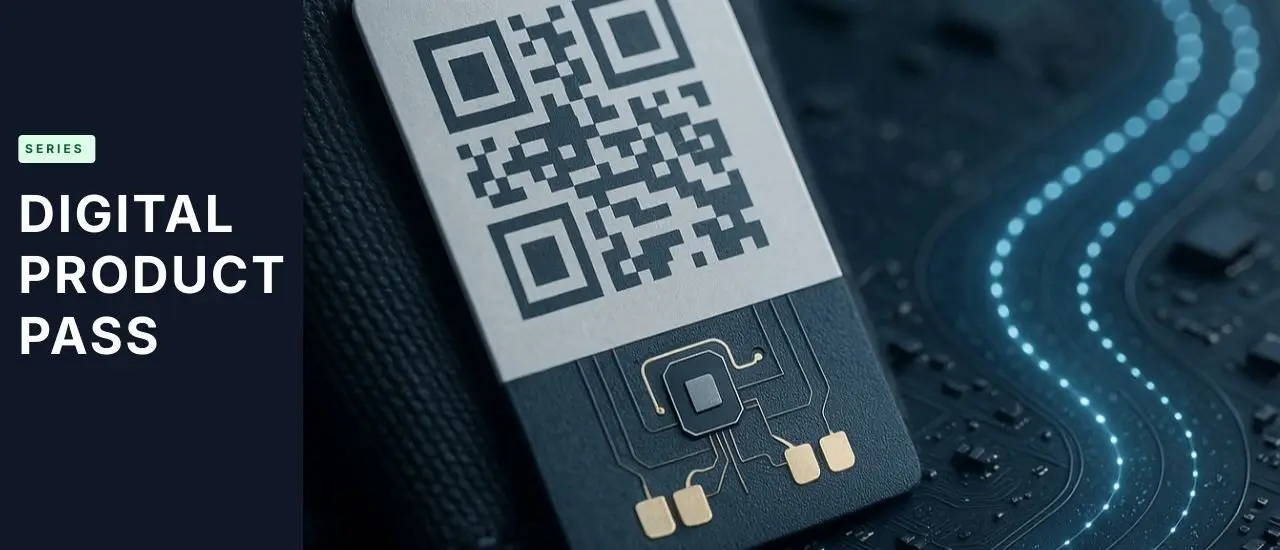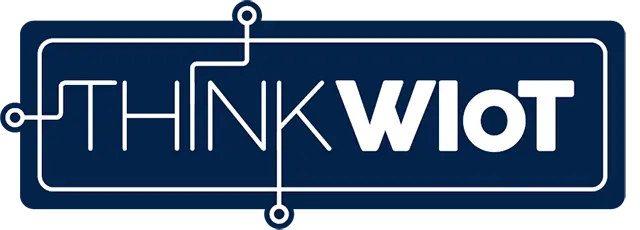Pilot Phase and Rollout
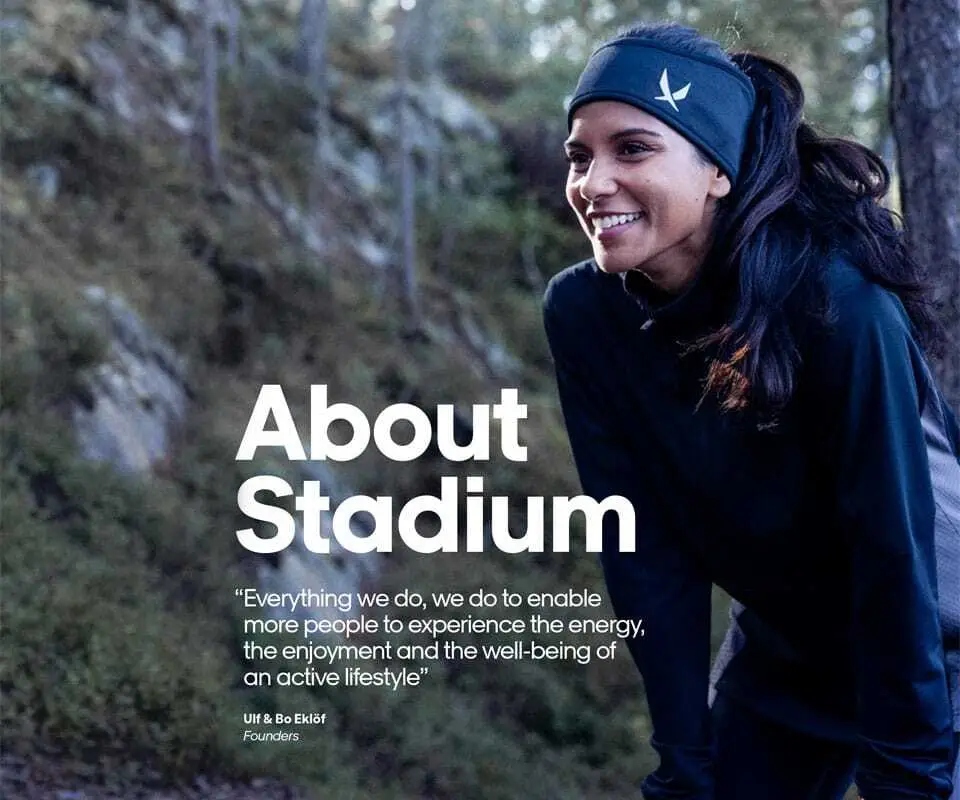
In 1974, brothers Ulf and Bo Eklöf opened a sports store in the center of Norrköping. They introduced a new concept that gave customers the opportunity to feel and touch sporting goods instead of selling them over the counter as before. The concept was successful and inspired the brothers to open their first Stadium store in Stockholm in 1987.
Review of the Pilot Phase
In 2019, Stadium launched a 3-month pilot to test the benefits of RFID technology for in-store processes. 60,000 products in two Stockholm stores were part of the project. It was only with the use of RFID technology that inventory accuracy was increased to 97 percent during the pilot phase. Johan Stenström worked out the final balance sheet at the end of the test phase and presented the results to the Board of Directors.
Approval for Rollout
The assessment of the Board of Directors was positive. This showed that there was confidence with regard to the RFID technology. Once the results were available, the project was very quickly approved by the Board of Directors and the funds for the rollout were made available.
The Board of Directors decided as early as 2020 to introduce RFID technology in all 180 stores and to provide the necessary budget. The importance that the management attributed to digitization via RFID is also shown by the fact that all other projects, with the exception of the sustainability strategy, were put on hold in 2021.
Rollout
The RFID rollout schedule targeted six stores per week. In the first step, all 117 Stadium stores were equipped with RFID technology. After an evaluation phase, the more than 60 outlets followed. The "train-the-trainer" method was used to train employees on RFID during the rollout. Employees in specific stores were trained to then transfer RFID skills to other stores. Progress was monitored by a central support team. To prevent difficulties in the rollout, qualified RFID experts intervened across stores when challenges arose. The second rollout and training phase in the Stadium outlets took place under remote conditions.
"The RFID rollout is part of the sustainability strategy as it prevents the overproduction of sportswear. 48.6 percent of all Stadium's products are sustainably manufactured and labeled with a sustainability label. The sustainability criteria includes 50 percent manufacturing from recycled material or sustainable cotton, fabric dyeing with a process that saves 50 percent energy and water, production with cellulose-based material and no fossil fuels during transport. At least one of these criteria must apply to legitimize the Sustainability Label. Stadium has set itself the goal of becoming climate-neutral by 2025 and reducing the CO2 footprint of its own brands by 50 percent."
RFID Tagging
Small Products
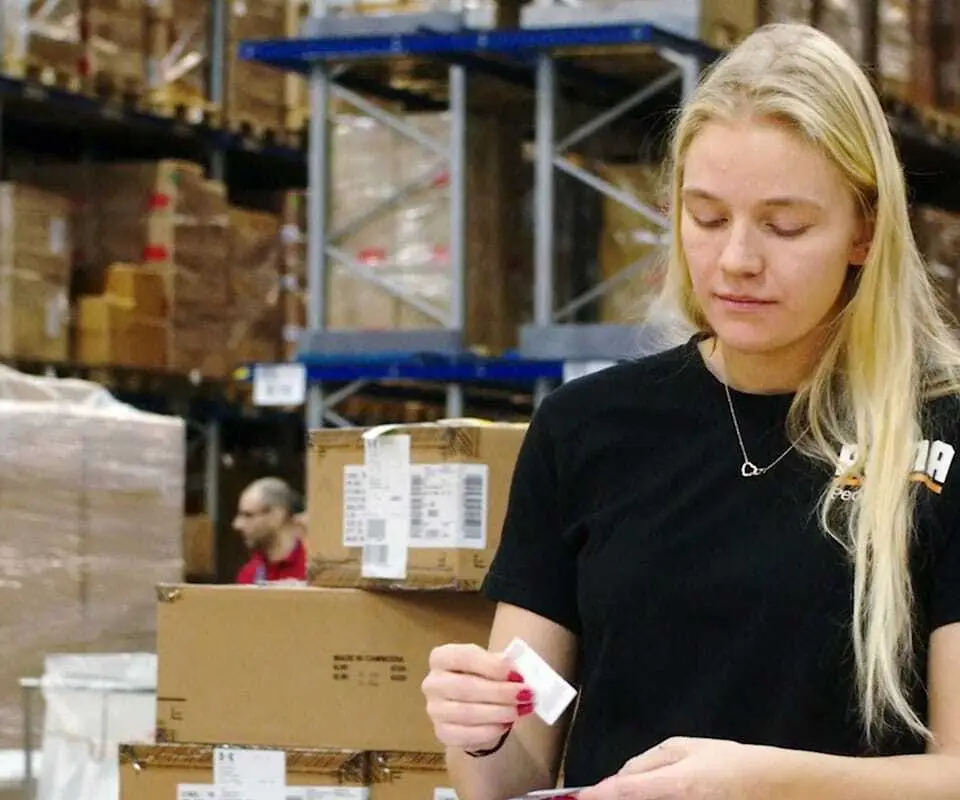
Stadium uses RFID to accurately and transparently digitize the supply chain of third-party and in-house goods. Third-party goods without an RFID tag are subsequently provided with an RFID tag at the distribution center.
30 million items are already tagged. This corresponds to 85 percent of the total inventory. This proportion is to be increased to 100 percent. In the future, the plan is to tag very small and inexpensive products with a merchandise value of less than 10 euros as well. Johan Stenström explains that it is debatable whether it is practical to apply RFID tags to low-cost products.
"We think it is worthwhile because it creates an end-to-end supply chain. A data deficit in the supply chain just becomes much more expensive," is his assessment of this.
Difficulties in tagging are currently due to the size of RFID tags, as they do not fit ideally on smaller products. Objects without a smooth surface are also cumbersome to tag with an RFID tag, such as the round handles of field hockey sticks.
30 million items are already tagged. This corresponds to 85 percent of the total inventory. This proportion is to be increased to 100 percent. In the future, the plan is to tag very small and inexpensive products with a merchandise value of less than 10 euros as well. Johan Stenström explains that it is debatable whether it is practical to apply RFID tags to low-cost products.
"We think it is worthwhile because it creates an end-to-end supply chain. A data deficit in the supply chain just becomes much more expensive," is his assessment of this.
Difficulties in tagging are currently due to the size of RFID tags, as they do not fit ideally on smaller products. Objects without a smooth surface are also cumbersome to tag with an RFID tag, such as the round handles of field hockey sticks.

Stadium uses RFID to accurately and transparently digitize the supply chain of third-party and in-house goods. Third-party goods without an RFID tag are subsequently provided with an RFID tag at the distribution center.
Labels and Source Tagging of Own Goods
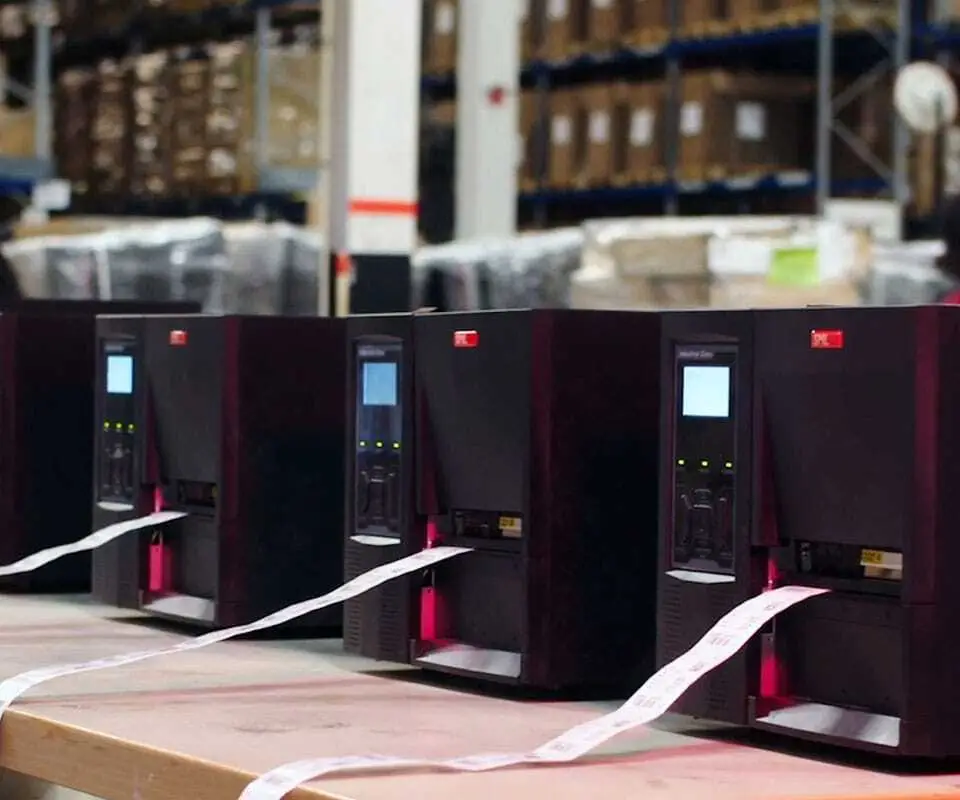
Five RFID printers are in use in Stadium's largest distribution center. Two RFID printers are used in the second warehouse for Stadium Outlets.
Stadium uses UHF labels from SML RFID with dimensions of 4 by 6 centimeters. These are attached directly to proprietary goods during manufacturing. Manufacturing and source tagging are primarily carried out in Asia. The goods arrive by ship to Gothenburg in Sweden. From there they are transported by rail to the central warehouse in Norrköping.
Tagging of Third-Party Goods
Third-party goods are also delivered to the central warehouse in Norrköping. Upon delivery, the items are checked for RFID via RFID tunnels. If no RFID tag is present, the goods do not go directly to picking, but are forwarded to the RFID printing station. There are five RFID printers in each distribution center. The goods are subsequently provided with an RFID tag, transferred to the warehouse or made available for pickup.
Stadium uses UHF labels from SML RFID with dimensions of 4 by 6 centimeters. These are attached directly to proprietary goods during manufacturing. Manufacturing and source tagging are primarily carried out in Asia. The goods arrive by ship to Gothenburg in Sweden. From there they are transported by rail to the central warehouse in Norrköping.
Tagging of Third-Party Goods
Third-party goods are also delivered to the central warehouse in Norrköping. Upon delivery, the items are checked for RFID via RFID tunnels. If no RFID tag is present, the goods do not go directly to picking, but are forwarded to the RFID printing station. There are five RFID printers in each distribution center. The goods are subsequently provided with an RFID tag, transferred to the warehouse or made available for pickup.

Five RFID printers are in use in Stadium's largest distribution center. Two RFID printers are used in the second warehouse for Stadium Outlets.
RFID-Supported Supply Chain
Altogether, Stadium operates three warehouses in Norrköping. The largest central warehouse supplies all Stadium stores with an annual volume of 9 million orders. The floor area is 43,000 square meters. The second largest warehouse, with a floor area of 13,000 square meters, supplies online customers and processes 4.7 million orders annually. Stadium outlets are supplied from the third warehouse, which is the smallest. The volume amounts to 2 million orders annually.
Central Warehouse in Norrköping
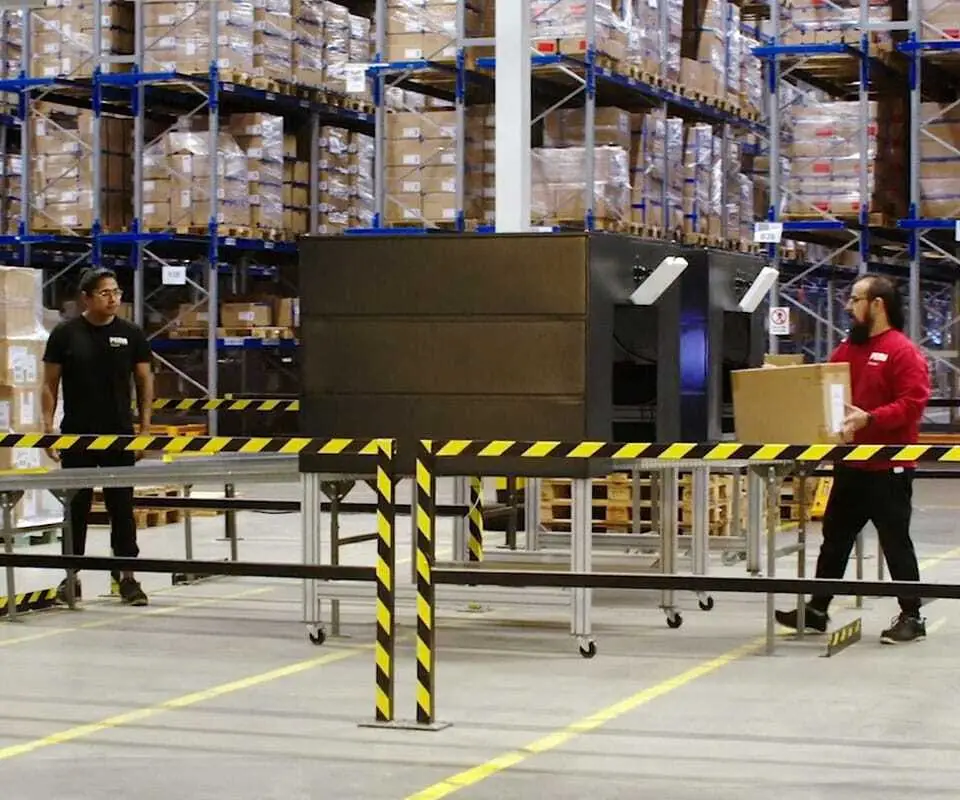
All own and third-party goods are captured at goods receipt and goods issue in the distribution center by means of RFID tunnel readers. A total of four tunnel readers are active in the largest central warehouse. In the future – after further tests – tunnel readers are to be placed in every distribution warehouse.
All deliveries of goods arrive at the central distribution center in Norrköping. These are the company's own products, which have already been tagged with RFID labels at the manufacturing site in Asia, and third-party products, some of which are tagged subsequently because the manufacturer does not work with RFID technology. Goods from Nike, Adidas, Asics, Under Armour, Bullpadel or Quiksilver are already delivered with an RFID tag and can immediately proceed to picking.
In order to check the RFID status and start the automated receiving process, all goods are scanned by a tunnel reader in a bulk reading process when they arrive at the central warehouse. Products without RFID-supported article numbers are subsequently tagged, so that the RFID identification can be used throughout the supply chain. Stadium is currently planning a 4th fully automated distribution warehouse, which is geared to RFID technology from the outset. The start is scheduled for 2023.
All deliveries of goods arrive at the central distribution center in Norrköping. These are the company's own products, which have already been tagged with RFID labels at the manufacturing site in Asia, and third-party products, some of which are tagged subsequently because the manufacturer does not work with RFID technology. Goods from Nike, Adidas, Asics, Under Armour, Bullpadel or Quiksilver are already delivered with an RFID tag and can immediately proceed to picking.
In order to check the RFID status and start the automated receiving process, all goods are scanned by a tunnel reader in a bulk reading process when they arrive at the central warehouse. Products without RFID-supported article numbers are subsequently tagged, so that the RFID identification can be used throughout the supply chain. Stadium is currently planning a 4th fully automated distribution warehouse, which is geared to RFID technology from the outset. The start is scheduled for 2023.

All own and third-party goods are captured at goods receipt and goods issue in the distribution center by means of RFID tunnel readers. A total of four tunnel readers are active in the largest central warehouse. In the future – after further tests – tunnel readers are to be placed in every distribution warehouse.
RFID Deployment at Stadium Stores
In-Store Advantages
The increased inventory accuracy in the supply chain, including the stores, means that the required goods are always available and deliveries to the stores can be planned and processed more effectively. Incoming goods are identified and can be tracked in the warehouse and on the sales floor. There is no need for any back-up inventory. This means that warehouse space can be reduced and the sales floor can be expanded. On the sales floor itself, employees are able to effectively advise customers because of the increased traceability.
Products can be located quickly and without error using RFID handhelds, reducing stress for employees and improving customer service. Once a product is sold, it is placed on a replenishment list. Employees can use this list to monitor in real time which products have been sold and replenish them from the warehouse on the sales floor. Empty shelves are prevented and customer satisfaction is improved through increased product availability.
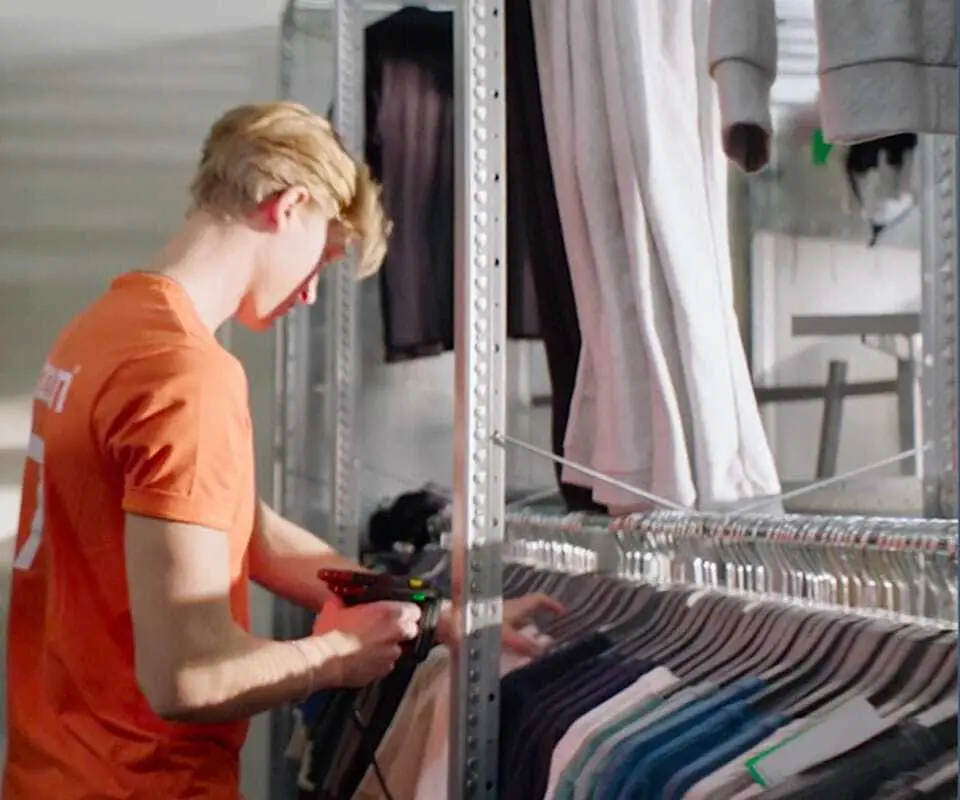
Third-party goods with their own RFID labels also have their own article numbers and EAN code. Stadium uses this EAN code. The "foreign" RFID labels are compatible.
Inventory

The inventory effort has been reduced by over 30 percent and the accuracy of the inventory has risen from 70 percent to almost 100 percent.
Before the introduction of RFID, the time required for the annual inventory was 200 hours. Extrapolated to all stores, this corresponds to 4,500 working days. Today, inventories are carried out every week, taking around two to three hours and taking place in parallel with everyday business. In absolute terms, the inventory effort has been reduced by over 30 percent and the accuracy of the inventory has risen from 70 percent to almost 100 percent. Each store has around two to three handhelds available for stocktaking.
After Sales
The RFID tags remain on the product even after the POS. This offers enormous advantages for reverse logistics in the event of an exchange. The data from the RFID tags can be read out and the products returned to the system in an uncomplicated manner. In the future, Stadium plans to further leverage the possibilities of RFID beyond the POS – for example, with the integration of NFC or QR codes to convey additional product information to customers.
Before the introduction of RFID, the time required for the annual inventory was 200 hours. Extrapolated to all stores, this corresponds to 4,500 working days. Today, inventories are carried out every week, taking around two to three hours and taking place in parallel with everyday business. In absolute terms, the inventory effort has been reduced by over 30 percent and the accuracy of the inventory has risen from 70 percent to almost 100 percent. Each store has around two to three handhelds available for stocktaking.
After Sales
The RFID tags remain on the product even after the POS. This offers enormous advantages for reverse logistics in the event of an exchange. The data from the RFID tags can be read out and the products returned to the system in an uncomplicated manner. In the future, Stadium plans to further leverage the possibilities of RFID beyond the POS – for example, with the integration of NFC or QR codes to convey additional product information to customers.

The inventory effort has been reduced by over 30 percent and the accuracy of the inventory has risen from 70 percent to almost 100 percent.
Interview with Johan Stenström
RFID Technology is a Driver of Innovation
“For Stadium, RFID technology works like an innovation engine. We will fully automate the planned new distribution warehouse and we intend to further optimize the supply chain with RFID. We are also discussing how Stadium can use RFID together with AI or NFC to optimize the customer journey. These, as well as six new Scandinavian stores in 2022, are concrete plans for the future.”
Interview

From the very beginning in 2018, Johan Stenström has led and driven the RFID project at Stadium.
1. How has the inventory accuracy of over 99 percent changed Stadium's processes?
It was only through the use of RFID that made it possible to see how many goods did not reach the sales floor on time or at all. With increased inventory accuracy, safety stock was no longer needed and logistics space could be reduced. In newly opened stores, Stadium can save an average of 30 square meters of warehouse space and convert it into retail space, which in turn has a positive effect on sales.
2. How have employees embraced RFID technology?
The feedback from the store employees has been positive. The use of RFID technology has significantly reduced the time needed to search for products and simplified the receiving process. The employees have more time to advise customers individually. Looking at the company as a whole, it would have been even better to involve other departments in the RFID rollout sooner. The integration of RFID at Stadium was mainly driven by the logistics department. It took some time for other areas of the company to recognize the benefits of the technology and to use RFID and the collected data.
3. What happens when RFID products that are not part of Stadium's range are read?
This was a problem at the beginning, because these products were also listed in our inventory count, even though they were not part of the range. Now all EPCs of the RFID tags are captured in the distribution centers and transferred to the system. The EPCs can be used in the store to identify which products belong to Stadium and which do not. Captured RFID tags that do not have an EPC that we recognize are ignored in the inventory count.
1. How has the inventory accuracy of over 99 percent changed Stadium's processes?
It was only through the use of RFID that made it possible to see how many goods did not reach the sales floor on time or at all. With increased inventory accuracy, safety stock was no longer needed and logistics space could be reduced. In newly opened stores, Stadium can save an average of 30 square meters of warehouse space and convert it into retail space, which in turn has a positive effect on sales.
2. How have employees embraced RFID technology?
The feedback from the store employees has been positive. The use of RFID technology has significantly reduced the time needed to search for products and simplified the receiving process. The employees have more time to advise customers individually. Looking at the company as a whole, it would have been even better to involve other departments in the RFID rollout sooner. The integration of RFID at Stadium was mainly driven by the logistics department. It took some time for other areas of the company to recognize the benefits of the technology and to use RFID and the collected data.
3. What happens when RFID products that are not part of Stadium's range are read?
This was a problem at the beginning, because these products were also listed in our inventory count, even though they were not part of the range. Now all EPCs of the RFID tags are captured in the distribution centers and transferred to the system. The EPCs can be used in the store to identify which products belong to Stadium and which do not. Captured RFID tags that do not have an EPC that we recognize are ignored in the inventory count.

From the very beginning in 2018, Johan Stenström has led and driven the RFID project at Stadium.
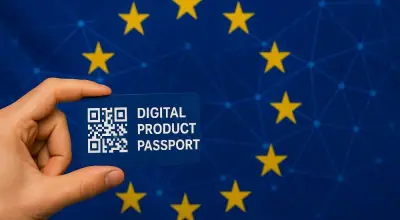
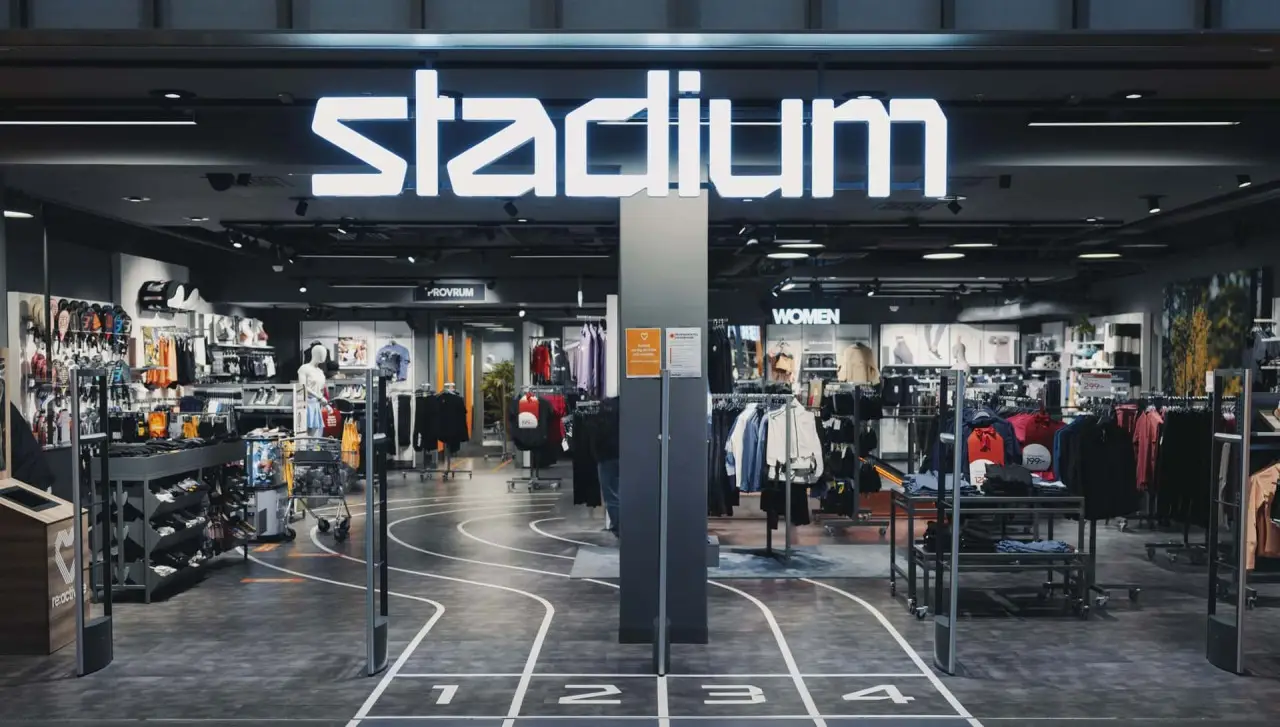



-über-Wi-Fi-HaLow-responsive.webp)
